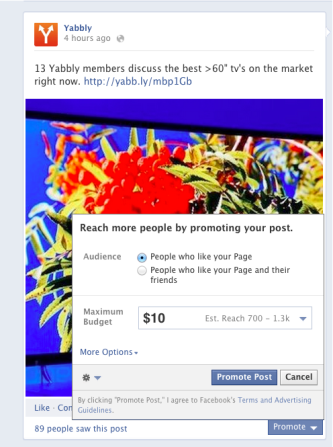12 basic principles for handling difficult questions, comments and statements on the social web. These apply to communications, marketing and customer service issues as much as they do HR and other activities.
Move fast. The longer you take to respond to comments, the more you risk appearing unresponsive, uncaring or, worse, secretive. According to NM Incite (pdf), users of Facebook pages expect to be responded to within 24 hours and Twitter users within 2 hours. In social media, it often pays more to be quick than 100% accurate.
Be accurate. Despite the pressure on speed, try to be as factual as possible – angry customers and bloggers love to highlight, question and poke holes in wooly or cagey responses. Make sure to double-check the facts with your sources and it you’re not confident about the answer, at the very least acknowledge the question, comment or statement, express concern and say you are looking into it. This can help buy you more time to find the appropriate solution.
Be flexible. Don’t assume that either the complaint is 100% genuine (consider carefully its motivation) or that you are 100% correct in your response. If you don’t have the full facts, say so publicly and communicate updates thereafter regularly. Appear anxious to help, as opposed to desperate to please. Backing yourself into a rhetorical corner can prove awkward when you have to extricate yourself publicly.
Be transparent. Admit if you have made a mistake. Denials, evasions insincere apologies as a means of quietening a community are often quickly spotted by the community and may simply inflame the issue. And while the tactic of trying to take a conversation offline can help diffuse difficult situations by buying you more time to assess the situation and/or find a solution, it can also be seen by the customer as a sign of weakness or withdrawal and lampooned as such.
Be sincere. If the complaint is genuine, apologize sincerely and with humility and in language appropriate to the audience. And yet an apology will mean nothing unless the problem is resolved in a reasonable manner. Sharing what you as an organization have learned through the experience is also a good way of demonstrating that your empathy is genuine.
Be human. As The Cluetrain Manifesto pointed out, ‘conversations among human beings sound human’, and are ‘conducted in a human voice’ that is ‘typically open, natural and uncontrived’. Look to use language that is accessible, engaging and empathetic while remaining at core professional and objective. Avoid jargon and respond direct to the individual or group using their actual names. ‘Dear valued customer’ doesn’t wash it with customers increasingly expecting personal attention.
Be focused. Not all customers are equal, and while social media is leveling the playing field, some – the 1% – are most active in the community. You need to identify your top influencers, make sure to understand their interests, requirements and behaviors, and make sure your PR, marketing and customer service teams understand when and how to interact with them. This is not to say you should ignore the rest of the community which, clearly, must not be allowed to feel unwanted or ignored, but be aware that complaints from highly socially engaged customers, bloggers and other influencers may impact not just the community itself but can also make waves beyond it.
Follow-up. Once you have acknowledged the issue and responded, find ways to engage direct with the customer in question on an ongoing basis. Encouraging deeper discussion on the topic will show you are willing to listen and learn, and help make them feel like you care. Equally, walking away once you have responded can make it appear as if the customer is no longer a priority.
Add value. Following up also provides you with additional opportunities to add value to conversations and hence deepen relationships and re-build trust. Look to be helpful by providing options rather than just a single solution, or be seen to go the extra mile by pointing people to useful or relevant information. People will notice – and may comment on the fact – that you are bending over backwards to help them.
Take control. Negative comments on your community should be actively managed – it is after all your channel. Proactively rebut statements that are demonstrably untrue or misleading and, above all, don’t run away from your page in challenging times as it will only make your detractors appear as victors. Ensure discussions remain within the parameters you have set in your Community Guidelines and enforce your terms regarding offensive posts, the sharing of confidential or personal information about company executives or other members of the community, third party advertising, repeat/verbatim comments etc. And remember that it is within your rights to ban members who consistently flout the rules, though you may want to explain why you are doing it both to the individual and to the community as a whole.
Avoid fights. Don’t antagonize your audience or get into online arguments: as Nestle discovered to its cost in the wake of Greenpeace’s palm oil campaign, David usually wins against Goliath in the court of online public opinion. If the situation is volatile, step back and wait for the right opportunity to engage with the customer in question, meantime work closely with the relevant internal stakeholders – often Sales, Public Relations and Legal – to develop a reasonable solution. Appearing thin-skinned will only make you appear weak and vulnerable.
Don’t censor. Nothing conveys a failure to listen and understand better than censoring or removing criticism from your official online communities or elsewhere. Realize that critical voices are a price of entry to the social web, and that deleting or demanding changes to negative posts can provide detractors with a powerful rhetorical weapon. Rather, always try to maintain the high ground, be seen to be responsive and listening and deploy a strong legal approach only as the final option: deleting content or threatening bloggers may simply result in the so-called ‘Streisand effect’ as complaints escalate and go viral.
It is essential that the teams managing official channels as well as interactions with third party online communities understand these principles and are properly trained in the art and science of handling negative opinion.
Read more
 Formatting your posts on Google Plus can be frustrating, here are a few tips that will make your post easier to read and increase their impact on Google plus
Formatting your posts on Google Plus can be frustrating, here are a few tips that will make your post easier to read and increase their impact on Google plus

 Now you can do the same for friends’ posts, or at least you’ll be able to soon. A gradual global roll-out for the feature is starting now, and it’s only available to people with fewer than 5,000 total friends and subscribers.
Now you can do the same for friends’ posts, or at least you’ll be able to soon. A gradual global roll-out for the feature is starting now, and it’s only available to people with fewer than 5,000 total friends and subscribers.
